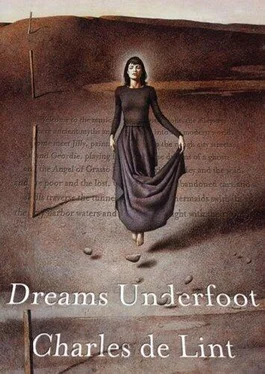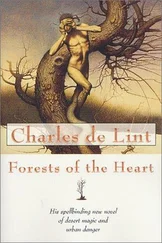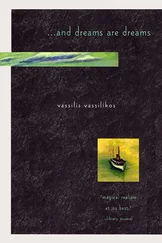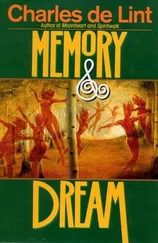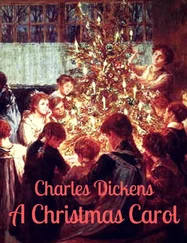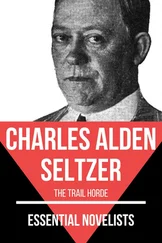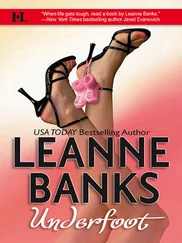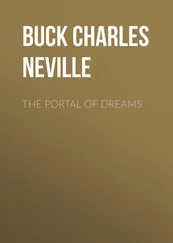“Depends on how big a difference you’re talking about,” Jilly said. “Sophie’s arranged for a series of lectures to run in association with the show and she’s also organized a couple of discussion eve—
nings at the gallery where people who come to the show can talk to us—about their reactions to the show, about their feelings, maybe even share their own experiences if that’s something that feels right to them at the time.”
“Yeah, but what about the kids that this is all about?” Annie asked.
Jilly turned from the stove. Annie didn’t look at all like a young expectant mother, glowing with her pregnancy. She just looked like a hurt and confused kid with a distended stomach, a kind of Ralph Steadman aura of frantic anxiety splattered around her.
“The way we see it,” Jilly said, “is if only one kid gets spared the kind of hell we all went through, then the show’ll be worth it.”
“Yeah, but the only kind of people who are going to go to this kind of thing are those who already know about it. You’re preaching to the converted.”
“Maybe. But there’ll be media coverage—in the papers for sure, maybe a spot on the news. That’s where—if we’re going to reach out and wake someone up—that’s where it’s going to happen.”
“I suppose.”
Annie flipped over the brochure and looked at the four photographs on the back.
“How come there isn’t a picture of Sophie?” she asked. “Cameras don’t seem to work all that well around her,” Jilly said. “It’s like—” she smiled “—an enchantment.”
The corner of Annie’s mouth twitched in response.
“Tell me about, you know ...” She pointed to July’s Urban Faerie paintings. “Magic. Enchanted stuff.”
Jilly put the stew on low to simmer then fetched a sketchbook that held some of the preliminary pencil drawings for the finished paintings that were leaning up against the wall. The urban settings were barely realized—just rough outlines and shapes—but the faerie were painstakingly detailed.
As they flipped through the sketchbook, Jilly talked about where she’d done the sketches, what she’d seen, or more properly glimpsed, that led her to make the drawings she had.
“You’ve really seen all these ... little magic people?” Annie asked. Her tone of voice was incredulous, but Jilly could tell that she wanted to believe.
“Not all of them,” Jilly said. “Some I’ve only imagined, but others ... like this one.” She pointed to a sketch that had been done in the Tombs where a number of fey figures were hanging out around an abandoned car, preRaphaelite features at odds with their raggedy clothing and setting. “They’re real.”
“But they could just be people. It’s not like they’re tiny or have wings like some of the others.”
Jilly shrugged. “Maybe, but they weren’t just people.”
“Do you have to be magic yourself to see them?”
Jilly shook her head. “You just have to pay attention. If you don’t you’ll miss them, or see something else—something you expected to see rather than what was really there. Fairy voices become just the wind, a bodach, like this little man here—” she flipped to another page and pointed out a small gnomish figure the size of a cat, darting off a sidewalk “—scurrying across the street becomes just a piece of litter caught in the backwash of a bus.”
“Pay attention,” Annie repeated dubiously.
Jilly nodded. “Just like we have to pay attention to each other, or we miss the important things that are going on there as well.”
Annie turned another page, but she didn’t look at the drawing. Instead she studied Jilly’s pixie features.
“You really, really believe in magic, don’t you?” she said.
“I really, really do,” Jilly told her. “But it’s not something I just take on faith. For me, art is an act of magic. I pass on the spirits that I see—of people, of places, mysteries.”
“So what if you’re not an artist? Where’s the magic then?”
“Life’s an act of magic, too. Claire Hamill sings a line in one of her songs that really sums it up for me:
‘If there’s no magic, there’s no meaning.’ Without magic—or call it wonder, mystery, natural wisdom—nothing has any depth. It’s all just surface. You know: what you see is what you get. I honestly believe there’s more to everything than that, whether it’s a Monet hanging in a gallery or some old vagrant sleeping in an alley.”
“I don’t know,” Annie said. “I understand what you’re saying, about people and things, but this other stuff—it sounds more like the kinds of things you see when you’re tripping.”
Jilly shook her head. “I’ve done drugs and I’ve seen Faerie. They’re not the same.”
She got up to stir the stew. When she sat down again, Annie had closed the sketchbook and was sitting with her hands flat against her stomach.
“Can you feel the baby?” Ply asked.
Annie nodded.
“Have you thought about what you want to do?”
“I guess. I’m just not sure I even want to keep the baby.”
“That’s your decision,” Jilly said. “Whatever you want to do, we’ll stand by you. Either way we’ll get you a place to stay. If you keep the baby and want to work, we’ll see about arranging daycare. If you want to stay home with the baby, we’ll work something out for that as well. That’s what this sponsorship’s all about. It’s not us telling you what to do; we just want to help you be the person you were meant to be.”
“I don’t know if that’s such a good person,” Annie said. “Don’t think like that. It’s not true.”
Annie shrugged. “I guess I’m scared I’ll do the same thing to my baby that my mother did to me.
That’s how it happens, doesn’t it? My mom used to beat the crap out of me all the time, didn’t matter if I did something wrong or not, and I’m just going to end up doing the same thing to my kid.”
“You’re only hurting yourself with that kind of thinking,” Jilly said.
“But it can happen, can’t it? Jesus, I I ... You know I’ve been gone from her for two years now, but I still feel like she’s standing right next to me half the time, or waiting around the corner for me. It’s like I’ll never escape. When I lived at home, it was like I was living in the house of an enemy. But running away didn’t change that. I still feel like that, except now it’s like everybody’s my enemy.”
Jilly reached over and laid a hand on hers.
“Not everybody,” she said. “You’ve got to believe that.”
“It’s hard not to.”
“I know.”
10
This Is Where We Dump Them, by Meg Mullally. Tinted photograph. The Tombs, Newford, 1991.
Two children sit on the stoop of one of the abandoned buildings in the Tombs. Their hair is matted, faces smudged, clothing dirty and illfitting. They look like turnof-thecentury Irish tinkers. There’s litter all around them: torn garbage bags spewing their contents on the sidewalk, broken bottles, a rotting mattress on the street, halfcrushed pop cans, soggy newspapers, used condoms.
The children are seven and thirteen, a boy and a girl. They have no home, no family. They only have each other.
The next month went by awfully fast. Annie stayed with me—it was what she wanted. Angel and I did get her a place, a onebedroom on Landis that she’s going to move into after she’s had the baby. It’s right behind the loft—you can see her back window from mine. But for now she’s going to stay here with me.
She’s really a great kid. No artistic leanings, but really bright. She could be anything she wants to be if she can just learn to deal with all the baggage her parents dumped on her.
Читать дальше
